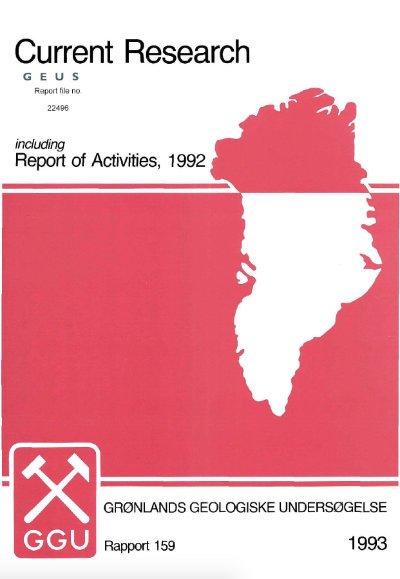Sedimentological and stratigraphical analysis of the Upper Triassic - Lower Jurassic succession in Jameson Land, East Greenland - a summary
DOI:
https://doi.org/10.34194/rapggu.v159.8208Abstract
As part of ongoing studies of Mesozoic basin development and hydrocarbon potential in East Greenland, a three-year research fellowship programme was initiated in the summer of 1987. The subject of the study was the Upper Triassic to Lower Jurassic succession in Jameson Land, East Greenland that includes the Kap Stewan and Neill Klinter Formations (Dam, 1988, 1989). This interval has many features in common with same of the largest coeval hydrocarbon reservoirs known in the northern North Sea; the outcrops in East Greenland provide an outstanding opportunity to study details of the architecture and sedimentary history of analogues of these reservoirs. The chief aim of the project was to establish detailed and regional facies models. and special emphasis was laid on the sequence stratigraphic relationships of the sediments in order to provide predictive models of reservoir characteristics. In addition the ichnology and source-rock potential of the formations have been studied. These studies have led to the establishment of a new formal lithostratigraphic and sequence stratigraphic scheme, and the unravelling of the palaeogeographic evolution of tile basin.
Downloads
Published
Issue
Section
License
This article is distributed under a CC-BY 4.0 licence, permitting free redistribution and reproduction for any purpose, even commercial, provided proper citation of the original work. Author(s) retain copyright over the article contents.


